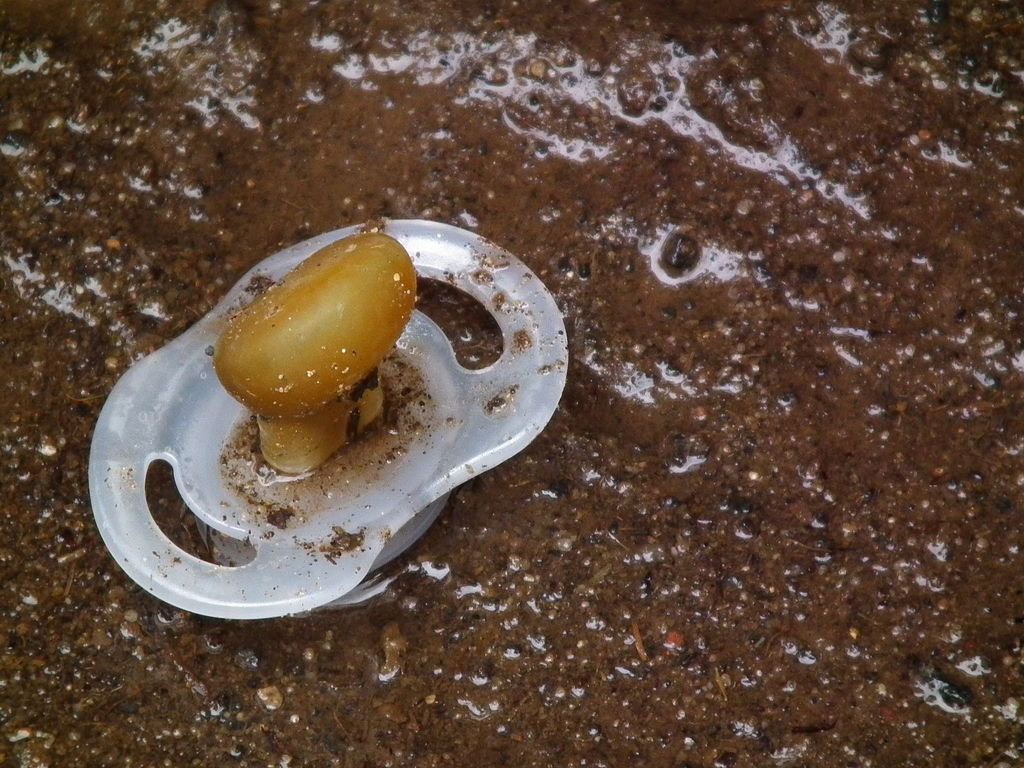
![By 4028mdk09 (Own work) [CC-BY-SA-3.0 (http://creativecommons.org/licenses/by-sa/3.0)], via Wikimedia Commons](https://www.microbe.net/wp-content/uploads/2013/05/1024px-Schnuller_im_Matsch_Juni_2012-1-300x225.jpg)
After some off-line dialogue related to my “Should you lick your baby’s dropped pacifier?” blog post, I have decided to post a separate comment regarding the hygiene hypothesis, mentioned in the introduction, and the plasticizer hypothesis, emphasized by some off-line correspondents.
What is clear is that in the modern, human-occupied indoor environment, there are microbes and plasticizers covering everything!
We have approximately 2,000 organisms on every square centimeter of our exposed surfaces (skin, mouth, upper respiratory). And as we shed all of our skin cells (which we repeatedly do every two to four weeks), the natural skin oils (with low volatility) and the microbes on normal skin end up covering all the surfaces exposed to the indoor environment — floors, walls, ceilings, furnishings, and dust…and of course, pacifiers!
Can you really distinguish between the two potentially important, potentially causally-related agents (microbes and chemicals) when we inhale, touch or lick objects in our environment?
What about the possibility of an adjuvant effect? Or an additive or synergistic effect of exposures to both microbes and plasticizers (and other semi-volatile organic chemicals abundant in our indoor environments such as pesticides and fire retardants)? Of course studying complex, interactive effects is extremely difficult, but absent such studies, the possibilities cannot be excluded. And there is sufficient evidence to support the interactive effects hypothesis.
A 2011 European Commission report (Kortenkamp et al ) pointed to additive effects of exposure to certain types of endocrine disrupting chemicals (EDCs).
A 1975 report of the National Academy of Sciences, Principles for Evaluating Chemicals in the Environment, highlights the potential for interactions: “It is widely recognized that in many instances the action of a toxic agent can be modified by exposure to other agents.” (page 13). The report gives examples of thousandfold potentiation of exposure to a known carcinogen by exposure to a second, non-toxic substance! (Bingham and Falk, 1969. Arch Env Health 19:779-783).
The risk of lung cancer from asbestos exposure and cigarette smoking illustrates the synergy of these two exposures: the combined risk is equal (approximately) to the multiple of the two separate risks. (see Asbestos-related diseases and smoking.)
But studies of combined effects are extremely difficult and somewhat rare in the scientific literature.
Limitations of research funding, human subjects research review committees, epidemiology, and the necessities of statistical analysis combine to impede scientific studies that can elucidate combined effects and risks. Add to the mix the potential importance of the variations in human genetics and the human microbiome, and we recognize the difficult of blending advances from various scientific disciplines to understand the complexity of modern life.

RT @phylogenomics: New post at #microBEnet Asthma: pacifiers, plasticizers, and microbes: Jonathan Eisen wearing plastic mic… http://t.co…
New at #microBEnet: Asthma: pacifiers, plasticizers, and microbes: After some off-line dialogue related to my … http://t.co/pDEblpVCv4